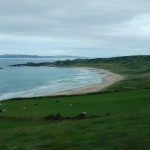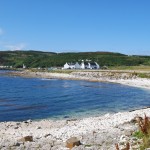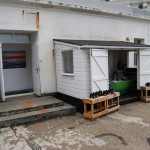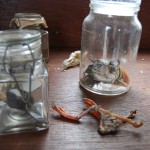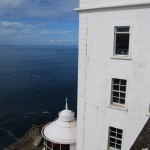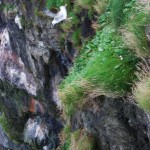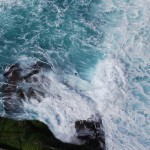I am now back in London, having had a fantastic time on Rathlin Island and having completed my placement. The whole experience has been unrivalled by anything I have ever experienced before.
The final week at the RSPB Seabird Centre went smoothly, although there were very few breeding birds left to show people so late in the season. However, it was great to see so many people who were enthusiastic about coming to the centre to learn about the conservation of RSPB despite our lack of puffins and guillemots. We also had some extra excitement around the centre last Friday, when committee members involved in the Northern Irish parliament came to Rathlin Island and visited the Seabird Centre for a presentation about the proposed new marine bill, aiming to establish Marine Protected Areas and increase conservation efforts in coastal areas of NI, including Rathlin Island. It was interesting to see how practical work at reserves such as the RSPB Seabird Centre could be applied to national-level environmental decisions, and I was glad to help set up the event and speak to some of the comittee members.
While the week consisted for the most part of running the visitor centre and occasional practical work such as ragwart pulling, the focus for the week was closing up the Seabird Centre for the season. The last open day for visitors was Sunday, September 1st, after which we spent the last days of the season packing up the RSPB material, taking inventory, and carrying the exceptionally heavy boxes up the treacherous 90 steps from the lighthouse to the storage room. (pictures below). We also helped the Visitor Services Manager with counting cash in the various donation boxes and cash registers. It was strange to see the Seabird Centre so empty – however, I plan on returning sometime soon to see it in its full glory with the quarter of a million or so birds that are breeding during peak times.
On the ferry back towards mainland NI on Tuesday, September 3rd, it struck me how much I had learned in the 3 weeks of my stay on Rathlin Island. Not only have I picked up extensive facts about various seabird species and their breeding habits, but through the numerous walks I took around the island and the knowledge the locals shared with me, I learned a lot about the history of the island and why nature is so important to life on the island. The island is unique in having been inhabited by humans since Neolithic times, and until the Second World War, seabirds and their eggs were one of the main food sources and a valued resource. The Sea of Moyle (between Rathlin Island and mainland NI) and its strong currents is vital to the aquatic life in the area, and is also an important crossing point for many migrating water mammals, including whales, dolphins, porpoises and basking sharks. My general verdict is that it is an amazing island, and I definitely plan on visiting again soon.
Now that my placement is over, I am excited to continue my studies with a possible focus on ornithology. I am also interested in the opportunity to apply for other residential volunteering placements with RSPB. For now, I shall conclude my Charity Insights placement with some photos (proper ones this time) of my stay on Rathlin Island and at the Seabird Centre.
Order from left to right, top to bottom:
1) My first sight of Rathlin Island in the distance from the north coast.
2) The harbour on Rathlin Island.
3) The cliffs, with kittiwakes nesting on the ledges – not a lot of space for them to move!
4) The Seabird Centre from the outside.
5) The puffin head (right) and razorbill skull (left) that we like to spook visitors with.
6) The day that cows invaded the Seabird Centre.
7) The crazy steps and long walk up from the lighthouse/seabird centre to the welcome point.
8 ) The West Lighthouse, which houses the RSPB Seabird Centre.
9) A fulmar chick taking its first flight from its nest!
10) Some shags flying over the massive waves along the cliffs.
